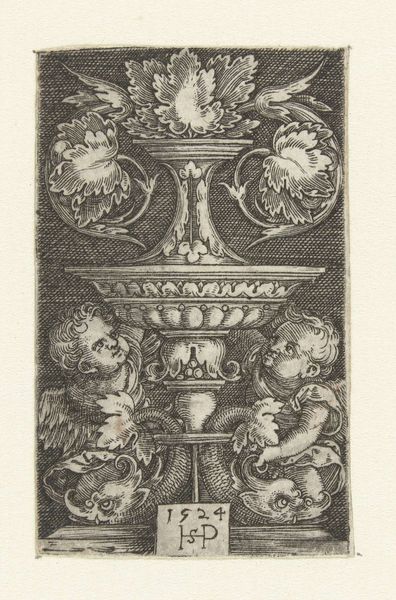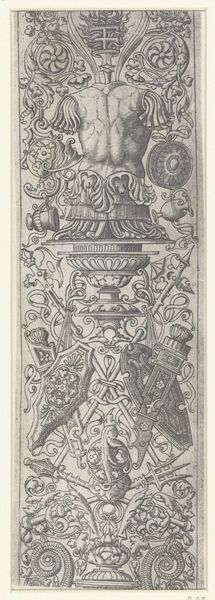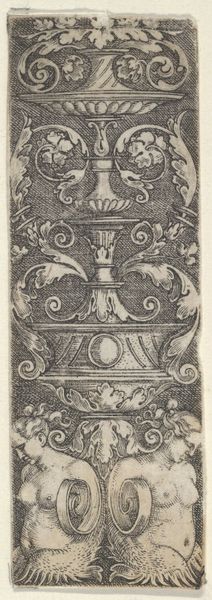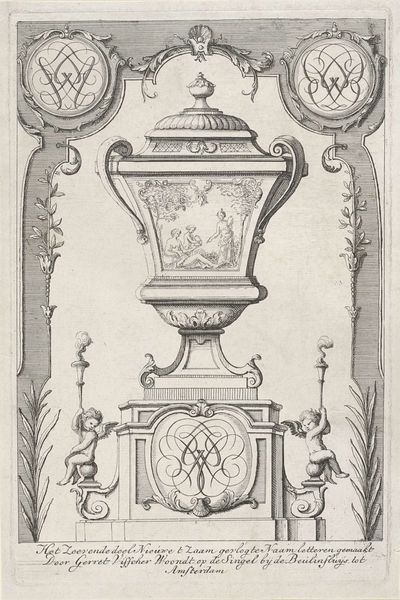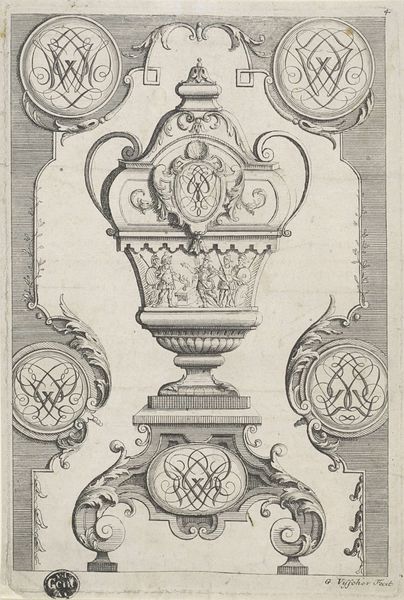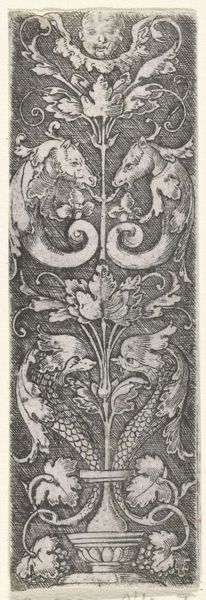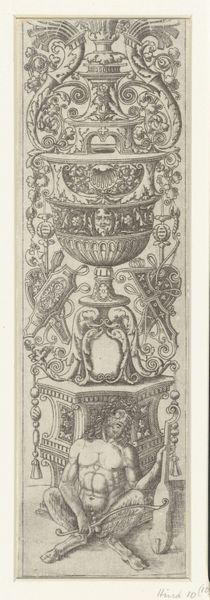
Fragment van kandelaber opgebouwd uit voet met twee sfinxen en vaas op een sokkel en twee wildemannen die aan oren van vaas zijn vastgebonden 1500
0:00
0:00
print, intaglio, engraving
#
pen drawing
# print
#
pen sketch
#
intaglio
#
old engraving style
#
form
#
ink line art
#
11_renaissance
#
pen-ink sketch
#
line
#
pen work
#
engraving
Dimensions: height 270 mm, width 72 mm
Copyright: Rijks Museum: Open Domain
Curator: This intricate engraving, "Fragment van kandelaber opgebouwd uit voet met twee sfinxen en vaas op een sokkel en twee wildemannen die aan oren van vaas zijn vastgebonden", created around 1500 by Giampietrino Birago, showcases such a remarkable display of lines and forms. It’s quite fascinating to consider. Editor: Yes, the detail is impressive. The combination of sphinxes and the tied wildmen is quite striking and unusual! What draws your eye to this particular print? Curator: For me, it's about unpacking the production of value itself. Look at the precise labor invested in this intaglio print – the time, the skill to transfer an image through meticulously cut lines, and consider what this meant in the 16th century. It wasn’t just art; it was functional design reproduced for wider consumption. Does examining the work this way offer new perspectives? Editor: I see what you mean. Thinking about it as a reproduced design intended for practical use makes it seem more accessible. The wildmen bound to the vase seem less like a random artistic choice, and more like... decorative subjugation? Curator: Precisely! How did labor influence the availability and value associated with ornamentation in domestic spaces? Editor: So, it’s about considering the economic and social contexts tied to materials and process! I hadn’t considered how much material culture reveals about historical labor practices before. Curator: Indeed! It encourages a broader understanding of artistic creation, don't you agree? Editor: Absolutely. Seeing art through this materialist lens really illuminates the connection between craftsmanship and society. It makes you think about what kind of "labor" future civilizations will ascribe to the art we have around us now.
Comments
No comments
Be the first to comment and join the conversation on the ultimate creative platform.
